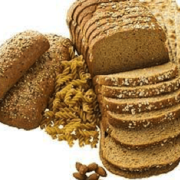A Tree Thread
-
Recently Browsing 0 members
- No registered users viewing this page.
-
Topics
-
-
Popular Contributors
-
-
Latest posts...
-
26
best pain killer over the counter
A couple weeks ago I had a complicated tooth extraction, the dentist gave me tramadol (the 50mg green & yellow caps) she said that was the strongest available, the next strongest would be morphine. I took a couple for a couple days then stopped as I know from experience that tramadol can get you addicted and it is extremely difficult to get yourself unhooked. So anyone using it should be very cautious and only take it when really neccessary. -
140
Kissing on the mouth
Trashy stuff. Ive seen more of Thailand than anyone except Khunla. You guys don't get out much. -
5
Analysis Trump’s 50-Day Pause: Russia’s Green Light for Ukraine Push
The 50 day pause gives Putin time to complete his ‘summer offensive’ AKA targeting civilians and civilian infrastructure. Trump always gives Putin what Putin wants. -
140
-
2
Crime Brawl Erupts Among Middle Eastern Tourists in Pattaya’s Soi Yensabai
They're an emotional bunch aren't they. -
98
Report Race Against Time: Bangkok May Be Below Sea Level by 2030
But isn't the current setting accounting for surges etc? In other words it will only INCREASE by that amount. Maybe I'm off but there should be adequate protection against moonphases, rotations and storm surges as it stands so those will only increase by the new higher sea level.
-
-
Popular in The Pub




.thumb.jpeg.d2d19a66404642fd9ff62d6262fd153e.jpeg)






.thumb.jpg.bc523c85a8d558dbc282dca7a2e602c9.jpg)

Recommended Posts
Create an account or sign in to comment
You need to be a member in order to leave a comment
Create an account
Sign up for a new account in our community. It's easy!
Register a new accountSign in
Already have an account? Sign in here.
Sign In Now